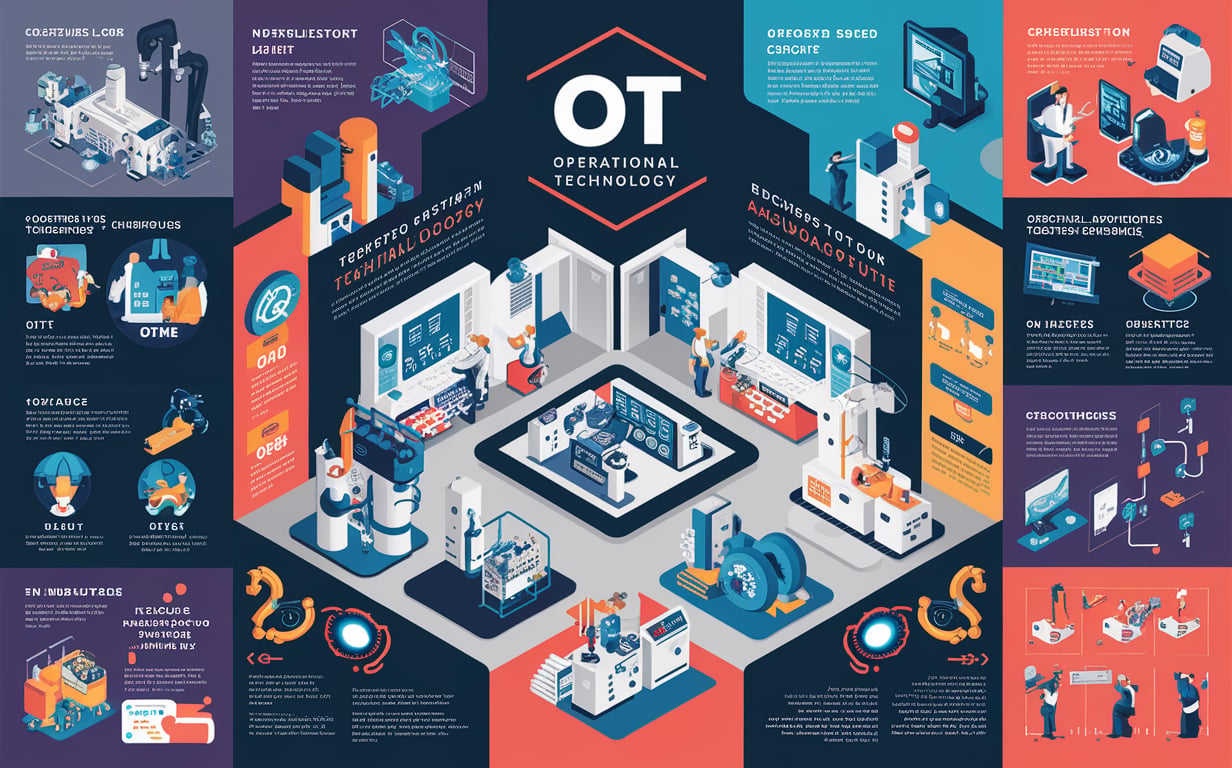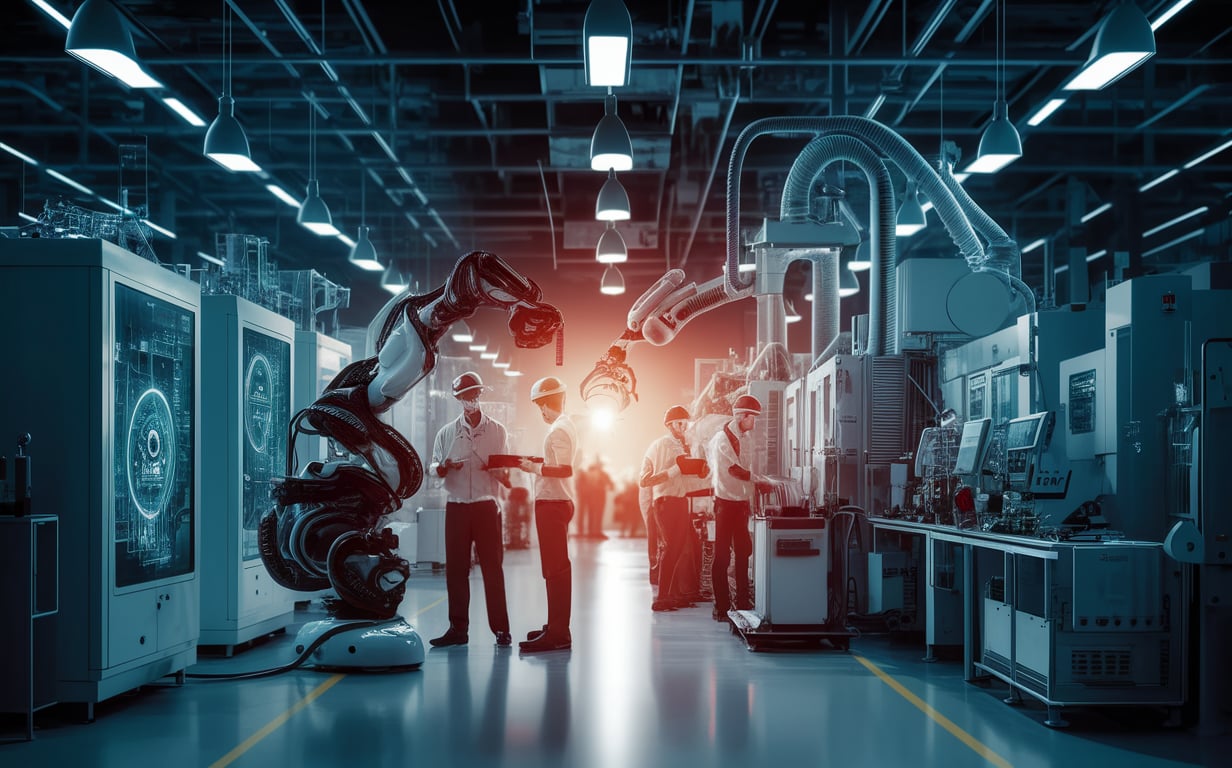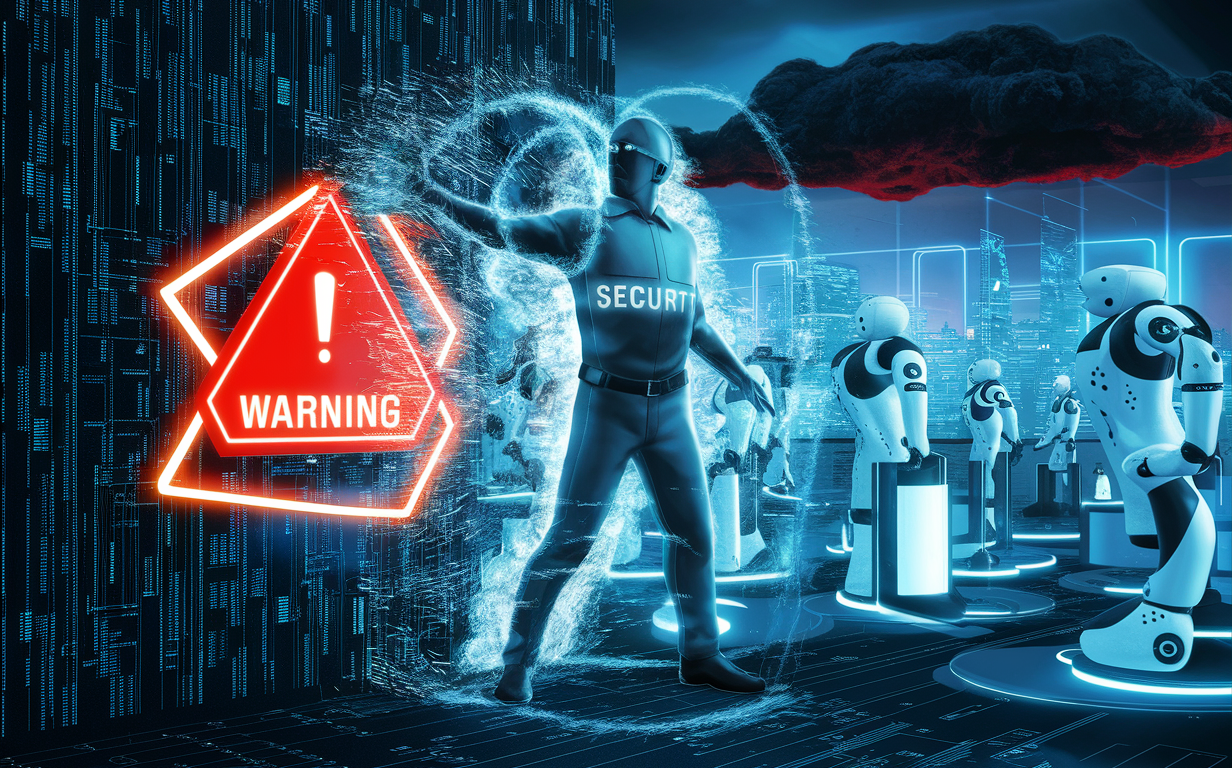Physical Address
304 North Cardinal St.
Dorchester Center, MA 02124

Operational Technology (OT) is the unseen hero behind our daily lives, from manufacturing to smart buildings. OT systems monitor and control physical processes through sensors, controllers, and actuators. The future of OT is bright with Industrial IoT, AI, and ML, but security challenges remain. By understanding and securing OT, we can leverage its potential for a better tomorrow.

Have you ever considered the complex network of systems that keeps our world running smoothly? From the self-regulating temperature in your home to the automated assembly lines churning out your favorite gadgets, a powerful force lurks behind the scenes – Operational Technology (OT).
OT is the technology that monitors, controls, and optimizes industrial equipment, infrastructure, and processes. It’s the unsung hero that ensures the smooth operation of various industries, often working tirelessly in the background. Unlike Information Technology (IT) which focuses on managing information, OT deals directly with the physical world.
OT is often overshadowed by its flashier cousin, Information Technology (IT). But make no mistake, OT is the unsung hero that keeps our daily lives running like clockwork. It’s the technology that monitors and controls industrial equipment, infrastructure, and processes across various industries. From the moment you wake up in a temperature-controlled room to the efficient delivery of your morning coffee, OT plays a vital role.
While both OT and IT are crucial components of modern technology, they have distinct purposes. IT focuses on managing and processing information, while OT deals directly with the physical world.
OT interacts with physical processes, whereas IT deals with data and information.
OT is used in industrial settings like manufacturing and energy, while IT supports business operations and communication.
OT systems often use specialized protocols for communication, unlike the standardized protocols used in IT networks.
The magic of OT lies in its ability to seamlessly connect the physical and digital worlds. Let’s delve into the core components of an OT system:
The Core Components of an OT System:
Imagine an orchestra – each instrument plays a vital role in creating beautiful music. Similarly, an OT system functions through the seamless collaboration of several key components:
These act as the eyes and ears of the operation, collecting data on temperature, pressure, flow, and other critical parameters.
The brains behind the brawn, controllers analyze sensor data and make real-time decisions to optimize processes. Programmable Logic Controllers (PLCs) are a common example.
These are the workhorses, translating controller commands into physical actions like opening valves, starting motors, or adjusting settings.
This serves as the bridge between humans and machines. HMI allows operators to monitor system status, intervene when needed, and make adjustments.
Imagine a factory assembly line. Sensors monitor the movement of parts, controllers ensure smooth operation, and actuators adjust machinery based on real-time data. The HMI provides a visual representation of the process, allowing operators to maintain control. This coordinated effort is the essence of the OT workflow.
The reach of OT extends far beyond factory floors. Here are some key applications:
OT plays a vital role in automated production lines, ensuring quality control and efficient resource utilization.
From power generation and distribution to water treatment plants, OT keeps critical infrastructure running smoothly.
Modern transportation systems rely heavily on OT for traffic management, signaling systems, and even autonomous vehicle operation.
Smart buildings leverage OT for temperature control, lighting management, and energy optimization.
OT is on the cusp of a transformative era. Here are some exciting trends to watch:
Connecting machines and devices to the internet allows for remote monitoring, predictive maintenance, and enhanced data analysis.
AI and ML can revolutionize OT by enabling smarter automation, anomaly detection, and real-time process optimization.
As OT systems become more interconnected, robust cybersecurity measures become essential to protect critical infrastructure from cyberattacks.

While OT offers immense benefits, it also faces unique security challenges:
Many OT systems rely on outdated infrastructure with inherent vulnerabilities. Upgrading these systems can be a complex and costly endeavor.
The increasing convergence of OT and IT networks creates new attack vectors that require a unified security strategy.
Here are some strategies to enhance OT security:
By acknowledging the challenges and implementing effective security measures, we can ensure that OT continues to be the reliable backbone of our modern world.

This article has provided a foundational understanding of OT. Let’s delve deeper into some specific aspects:
The impact of OT goes beyond individual industries. It creates a ripple effect, influencing everything from product quality and safety to environmental sustainability. For instance, efficient OT systems in manufacturing can minimize waste and energy consumption. Additionally, OT-powered smart grids in the energy sector can optimize energy distribution and reduce reliance on fossil fuels.
While OT excels at automation, human expertise remains crucial. OT specialists maintain and optimize systems, analyze data to identify trends, and intervene when necessary. Effective collaboration between OT professionals and other stakeholders, such as engineers and business leaders, is essential for maximizing the potential of OT.
The evolution of OT is creating new job opportunities. Demand is high for specialists in areas like:
Securing OT infrastructure requires a deep understanding of both OT and cybersecurity principles.
The vast amount of data generated by OT systems needs to be analyzed to optimize processes and identify potential issues. Data scientists with expertise in OT will be in high demand.
As HMI becomes more sophisticated, there’s a growing need for specialists who can design user-friendly interfaces that enhance operator experience and improve decision-making.
By fostering a skilled workforce equipped to handle the complexities of modern OT systems, we can ensure that this technology continues to serve us effectively.
Operational Technology, the silent hero behind our daily lives, deserves recognition and appreciation. As we move towards a more automated and interconnected future, embracing OT advancements while addressing security concerns is crucial. By investing in OT infrastructure, fostering skilled professionals, and prioritizing robust cybersecurity measures, we can leverage the immense potential of OT to build a smarter and more efficient world.
Here are some frequently asked questions about Operational Technology (OT):